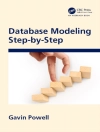Machines capable of automatic pattern recognition have many fascinating uses in science & engineering as well as in our daily lives. Algorithms for supervised classification, where one infers a decision boundary from a set of training examples, are at the core of this capability.
This book takes a close view of data complexity & its role in shaping the theories & techniques in different disciplines & asks:
- What is missing from current classification techniques?
- When the automatic classifiers are not perfect, is it a deficiency of the algorithms by design, or is it a difficulty intrinsic to the classification task?
- How do we know whether we have exploited to the fullest extent the knowledge embedded in the training data?
Uunique in its comprehensive coverage & multidisciplinary approach from various methodological & practical perspectives, researchers & practitioners will find this book an insightful reference to learn about current available techniques as well as application areas.
สารบัญ
Theory and Methodology.- Measures of Geometrical Complexity in Classification Problems.- Object Representation, Sample Size, and Data Set Complexity.- Measures of Data and Classifier Complexity and the Training Sample Size.- Linear Separability in Descent Procedures for Linear Classifiers.- Data Complexity, Margin-Based Learning, and Popper’s Philosophy of Inductive Learning.- Data Complexity and Evolutionary Learning.- Classifier Domains of Competence in Data Complexity Space.- Data Complexity Issues in Grammatical Inference.- Applications.- Simple Statistics for Complex Feature Spaces.- Polynomial Time Complexity Graph Distance Computation for Web Content Mining.- Data Complexity in Clustering Analysis of Gene Microarray Expression Profiles.- Complexity of Magnetic Resonance Spectrum Classification.- Data Complexity in Tropical Cyclone Positioning and Classification.- Human-Computer Interaction for Complex Pattern Recognition Problems.- Complex Image Recognition and Web Security.












